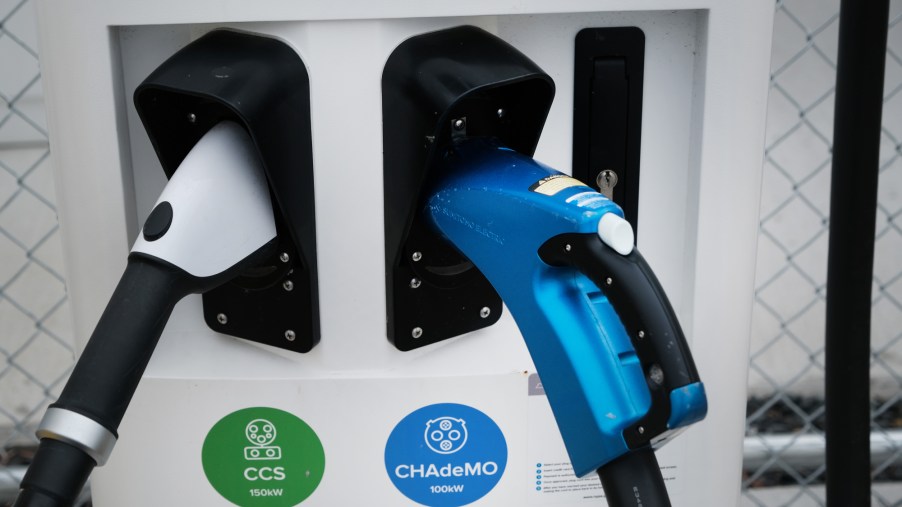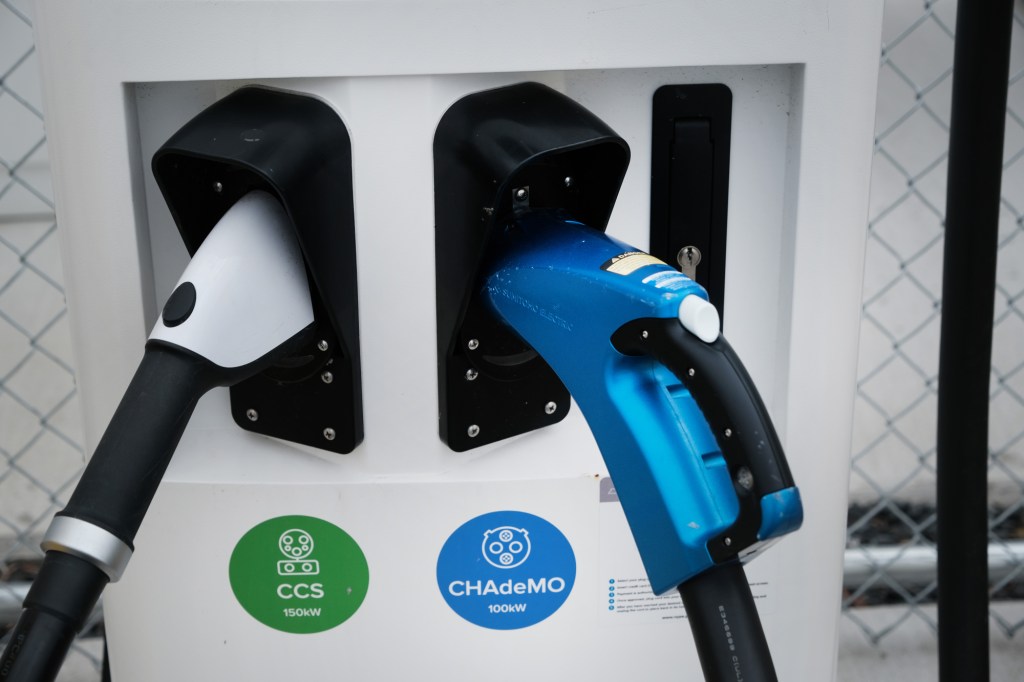
Electric Vehicles: What Is DC Fast Charging?
Don’t be overwhelmed by the different types of charging for your new electric vehicle. There are a few different kinds of chargers you might happen upon on your EV journey. Level 1, Level 2, and DC Fast Charging are the three types of electric vehicle chargers you will encounter on the road.
Electric vehicle DC Fast Charging

Electric vehicles can charge at home or at public charging stations. While at home, you have the option of a few different types of chargers. At public charging stations, you will be able to find DC Fast Chargers that will charge your EV at a much faster rate.
ChargePoint has some good information about what differentiates the chargers. The “DC” in DC Fast Charging means “direct current.” Level 2 chargers are “AC” chargers, or “alternating current,” similar to what you would find in a typical home outlet.
Electric vehicles have chargers inside the car that can convert AC to DC for faster charging. This means your battery will charge quickly, but it also means your battery is working harder.
Don’t rely on DC Fast Charging all the time
Using a fast charger isn’t great for your electric vehicle battery. It should be reserved for when you are in a rush or need a quick charge to be on your way. This might be during a road trip or if you are in a hurry and have ice cream melting in your frunk.
Additionally, fast charging is more expensive. It puts more strain on the battery as it charges rapidly, which is bad for the battery in the long run. Vehicles have something called the “charging curve” while charging.
Charging usually starts slow and speeds up as the charge progresses. Once your battery hits 80%, it is a good idea to unplug to save your battery life. Most likely, charging will slow automatically at that point.
Also, there are many “do’s and don’ts” of EV charging, and hogging a DC Fast Charger while someone else is in need is considered bad manners. Get in, get your charge, and get on your way.
Additionally, some places charge a fee for all of the time your car sits connected to a charger but isn’t actually charging. This is called an “idle fee.”
Level 1 and Level 2 charging
Level 1 charging uses a normal 120-volt connection as you would find in a standard outlet. This is fine for charging but as you get more comfortable, you will likely want to upgrade. Level 1 charging can be very slow and might take more time than you have to get charged up.
Level two charging takes a different route than DC Fast Charging. AC power is supplied from the charging station to the charger. The charger sends current to your onboard charger, which supplies DC power to your battery.
For Level 2 chargers, you will usually see the J1772 connector. With Fast Charging, you will have a CCS1, CCS1, or CHAdeMO connector.
If you are considering installing a charger at home, you might be eligible for a tax credit or rebate. Though Tesla vehicles are no longer eligible, it has been rumored there will be a new federal rebate for EVs coming down the line that could be up to $10,000.



